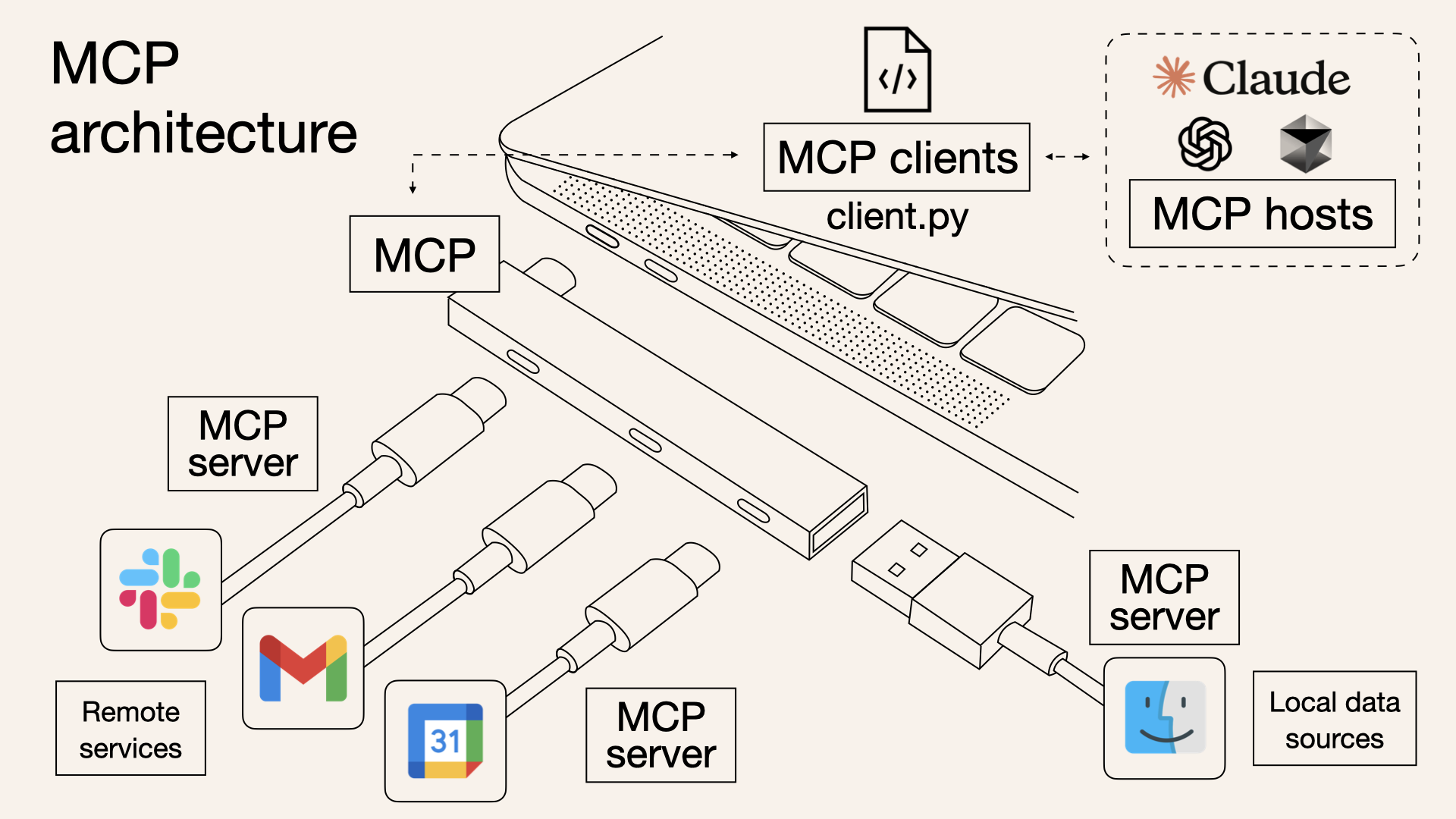Unlock the Power of Context: Why You Should Use MCP – Model Context Protocol with Your n8n Workflows
Estimated Reading Time: 8 minutes
- Enhanced Decision-Making: Provides context for more informed AI-driven decisions.
- Improved Accuracy: Reduces ambiguity and increases accuracy in AI responses.
- Increased Efficiency: Saves time with context-aware automation.
- Greater Adaptability: Allows AI to respond to changing circumstances.
- Personalized Experiences: Tailors interactions to individual customer needs.
Table of Contents:
- Understanding the Need for Context in AI
- What is Model Context Protocol (MCP)?
- n8n: Your Workflow Automation Powerhouse
- The Synergy: MCP and n8n
- Practical Applications of MCP with n8n
- Implementing MCP with n8n: A Step-by-Step Guide
- Challenges and Considerations
- The Future of AI and Workflow Automation
- Conclusion
- FAQ
Understanding the Need for Context in AI
Before we dive into the specifics of MCP and n8n, it’s crucial to understand why context is so vital in AI. Traditional AI models often struggle with ambiguity and require explicit instructions for every task. This limitation can lead to errors, inefficiencies, and a lack of adaptability in real-world scenarios.
Imagine trying to understand the implications of the recent news, such as the severe storms sweeping across the US (https://www.youtube.com/watch?v=NujoOwVg7BQ), without knowing the geographical location of your business or the potential impact on your supply chain. Context provides the necessary background information and relationships to make informed decisions. Similarly, in AI, context allows models to interpret data, understand user intent, and generate relevant and accurate responses.
What is Model Context Protocol (MCP)?
Model Context Protocol (MCP) is a framework designed to provide AI models with the contextual information they need to perform tasks effectively. It establishes a standardized way to represent and share contextual data, ensuring that AI models can access and utilize relevant information from various sources. MCP enables AI systems to understand the “who, what, when, where, and why” behind a particular task, leading to more intelligent and context-aware outcomes.
n8n: Your Workflow Automation Powerhouse
n8n is a powerful, open-source workflow automation platform that allows you to connect various apps and services to automate repetitive tasks. With its user-friendly interface and extensive library of integrations, n8n empowers businesses to streamline their operations, reduce manual effort, and improve overall efficiency. Whether it’s automating email marketing campaigns, managing customer data, or integrating with CRM systems, n8n provides the tools to build custom workflows tailored to your specific needs.
The Synergy: MCP and n8n
The true potential is unlocked when MCP and n8n are combined. By integrating MCP with your n8n workflows, you can inject contextual awareness into your automated processes, resulting in more intelligent, accurate, and efficient outcomes.
Here’s a breakdown of the key benefits:
- Enhanced Decision-Making: MCP provides AI models within your n8n workflows with the necessary context to make informed decisions. For instance, if you’re automating customer support interactions, MCP can provide the AI model with information about the customer’s purchase history, previous interactions, and current issues. This enables the AI to provide more personalized and relevant support, leading to higher customer satisfaction.
- Improved Accuracy: By providing context, MCP reduces the ambiguity and uncertainty that AI models often face. This leads to more accurate results and fewer errors. For example, imagine using n8n to automate content creation for your blog. By integrating MCP, you can provide the AI model with information about the target audience, the desired tone, and the overall marketing strategy. This ensures that the generated content aligns with your brand and resonates with your audience.
- Increased Efficiency: Automating tasks with context-aware AI models saves time and resources. With MCP, your n8n workflows can handle complex tasks with minimal human intervention, freeing up your team to focus on more strategic initiatives. Consider a scenario where you’re using n8n to automate your sales process. By integrating MCP, you can provide the AI model with information about the lead’s industry, company size, and specific needs. This enables the AI to personalize sales pitches and identify the most promising leads, significantly increasing sales efficiency.
- Greater Adaptability: MCP enables AI models to adapt to changing circumstances and new information. This is particularly useful in dynamic environments where context can change rapidly. Imagine using n8n to monitor social media for mentions of your brand. By integrating MCP, you can provide the AI model with real-time information about current events, industry trends, and competitor activities. This enables the AI to quickly identify and respond to relevant conversations, protecting your brand reputation and capitalizing on emerging opportunities. For example, the far-right leader Marine Le Pen was recently found guilty of embezzlement and barred from running for office for 5 years (https://www.cbsnews.com). This news could affect sentiment analysis regarding political topics, and MCP would provide this context to the AI model.
- Personalized Experiences: MCP allows you to create personalized experiences for your customers by tailoring interactions to their specific needs and preferences. By leveraging contextual data, your n8n workflows can deliver targeted messages, relevant recommendations, and customized offers that resonate with each individual customer.
Practical Applications of MCP with n8n
Let’s explore some practical examples of how you can leverage MCP with n8n to automate your business processes:
- Smart Email Marketing: Integrate MCP with your n8n email marketing workflows to personalize email content based on recipient demographics, purchase history, and browsing behavior. This can significantly improve open rates, click-through rates, and conversion rates. Imagine automatically adjusting your email content based on whether a recipient is located in an area affected by severe storms (https://www.youtube.com/watch?v=NujoOwVg7BQ), offering assistance or relevant products.
- Context-Aware Customer Support: Use MCP to provide your AI-powered chatbot with information about the customer’s issue, past interactions, and relevant product information. This allows the chatbot to provide more accurate and helpful support, resolving issues faster and improving customer satisfaction.
- Intelligent Lead Scoring: Integrate MCP with your n8n lead generation workflows to enrich lead data with contextual information such as industry, company size, and online activity. This enables you to prioritize leads based on their likelihood of conversion, maximizing your sales efforts. Consider also incorporating news such as Wall Street’s reaction to Trump’s upcoming “Liberation Day” tariff announcement (https://www.cbsnews.com) to determine how that may impact leads within specific financial industries.
- Automated Content Curation: Use MCP to provide your n8n content curation workflows with information about trending topics, industry news, and competitor activities. This allows you to automatically generate relevant and engaging content that resonates with your target audience.
- Dynamic Pricing Optimization: Integrate MCP with your n8n pricing workflows to adjust prices based on real-time market conditions, competitor pricing, and customer demand. This enables you to optimize your pricing strategy for maximum profitability.
Implementing MCP with n8n: A Step-by-Step Guide
Implementing MCP with n8n may seem daunting, but with a structured approach, it can be a seamless process. Here’s a step-by-step guide:
- Define Your Contextual Data: Identify the key pieces of contextual information that are relevant to your business processes. This may include customer demographics, purchase history, location data, industry information, and real-time market data.
- Choose Your Data Sources: Determine the sources from which you will collect your contextual data. This may include CRM systems, marketing automation platforms, social media APIs, and third-party data providers.
- Design Your MCP Schema: Create a standardized schema for representing your contextual data. This schema should define the data types, relationships, and validation rules for each piece of contextual information.
- Build Your n8n Workflows: Design your n8n workflows to collect, process, and integrate your contextual data. Use n8n’s built-in nodes and integrations to connect to your data sources and transform the data into the desired format.
- Integrate with AI Models: Integrate your n8n workflows with your chosen AI models. Use n8n’s HTTP Request node or custom integrations to send contextual data to your AI models and receive predictions or recommendations.
- Test and Optimize: Thoroughly test your workflows and AI models to ensure that they are performing as expected. Monitor performance metrics and make adjustments as needed to optimize accuracy, efficiency, and adaptability.
Challenges and Considerations
While the benefits of integrating MCP with n8n are undeniable, there are also some challenges and considerations to keep in mind:
- Data Privacy and Security: Handling sensitive contextual data requires robust security measures and compliance with privacy regulations. Ensure that your data storage and processing practices are secure and compliant with applicable laws such as GDPR and CCPA. The collapse into bankruptcy of the genetic testing company 23andMe highlights the need to protect user’s sensitive and personal data.
- Data Quality and Accuracy: The accuracy and reliability of your AI models depend on the quality of your contextual data. Implement data validation and cleansing processes to ensure that your data is accurate and consistent.
- Complexity: Implementing MCP with n8n can be complex, especially for organizations with limited technical expertise. Consider partnering with an AI consulting firm or workflow automation specialist to help you design, implement, and maintain your MCP-enabled n8n workflows.
The Future of AI and Workflow Automation
The integration of MCP with n8n represents a significant step forward in the evolution of AI and workflow automation. As AI models become increasingly sophisticated and context-aware, businesses will be able to automate even more complex tasks, unlocking new levels of efficiency, productivity, and innovation. The election of Zimbabwean Kirsty Coventry as the first female president of the International Olympic Committee (https://en.wikipedia.org/wiki/Portal:Current_events) is another example of a piece of news that may impact various workflows.
Conclusion
Why should you use MCP – Model Context Protocol with your n8n workflows? Because in the competitive landscape of today, businesses need every edge they can get. Integrating MCP with your n8n workflows allows you to inject contextual awareness into your automated processes, resulting in more intelligent, accurate, and efficient outcomes. By leveraging the power of context, you can unlock new levels of personalization, adaptability, and decision-making, transforming your business processes and achieving your strategic goals. By understanding the current events, such as the ongoing Gaza conflict, you can create workflows that are sensitive to the needs of your stakeholders.
Ready to unlock the power of context in your n8n workflows? Contact us today for a consultation and let our team of AI experts help you design and implement custom MCP-enabled n8n workflows that will revolutionize your business processes.
FAQ
- What is MCP? Model Context Protocol is a framework designed to provide AI models with necessary contextual information.
- How can n8n help my business? n8n can automate repetitive tasks and integrate various applications and services to streamline operations.
- What are the benefits of using MCP with n8n? Benefits include enhanced decision-making, improved accuracy, increased efficiency, greater adaptability, and personalized customer experiences.


